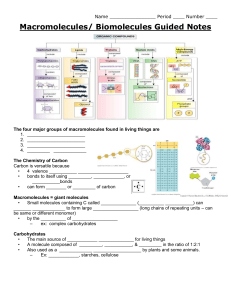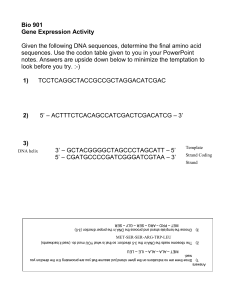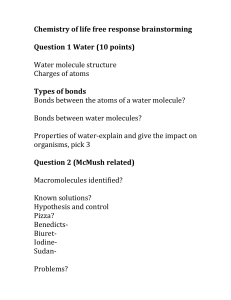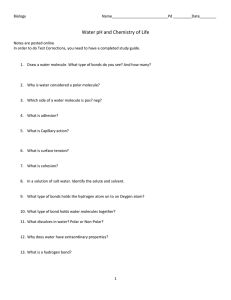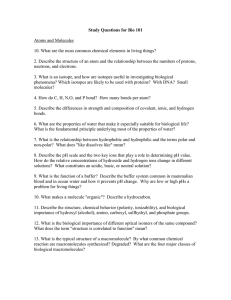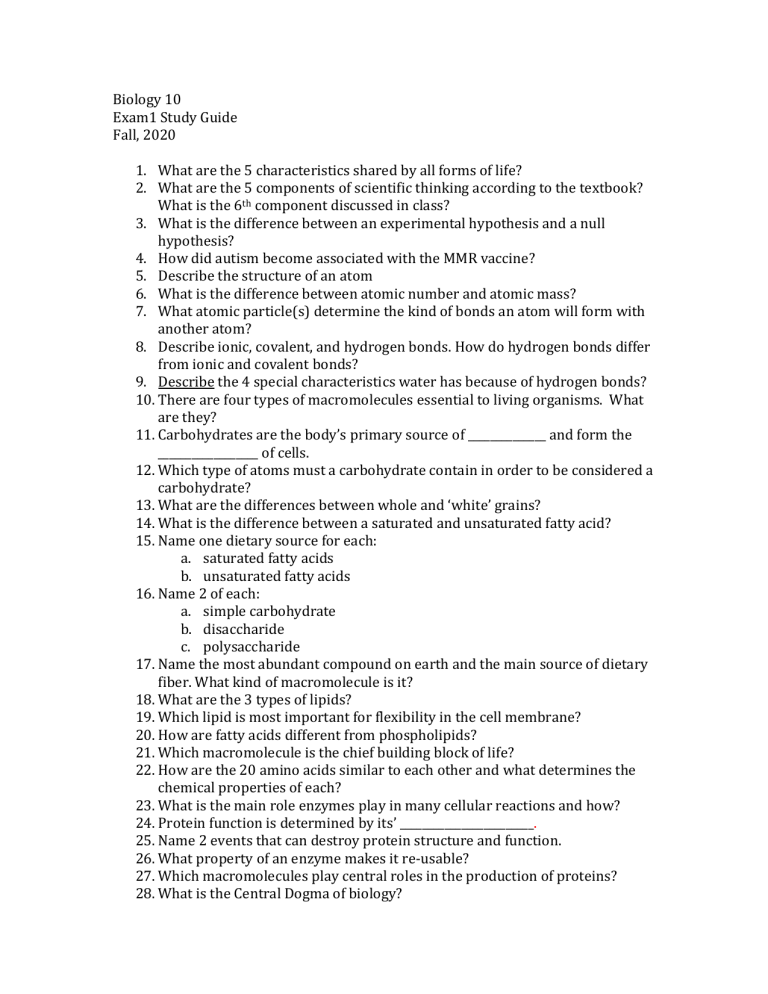
Biology 10 Exam1 Study Guide Fall, 2020 1. What are the 5 characteristics shared by all forms of life? 2. What are the 5 components of scientific thinking according to the textbook? What is the 6th component discussed in class? 3. What is the difference between an experimental hypothesis and a null hypothesis? 4. How did autism become associated with the MMR vaccine? 5. Describe the structure of an atom 6. What is the difference between atomic number and atomic mass? 7. What atomic particle(s) determine the kind of bonds an atom will form with another atom? 8. Describe ionic, covalent, and hydrogen bonds. How do hydrogen bonds differ from ionic and covalent bonds? 9. Describe the 4 special characteristics water has because of hydrogen bonds? 10. There are four types of macromolecules essential to living organisms. What are they? 11. Carbohydrates are the body’s primary source of ______________ and form the __________________ of cells. 12. Which type of atoms must a carbohydrate contain in order to be considered a carbohydrate? 13. What are the differences between whole and ‘white’ grains? 14. What is the difference between a saturated and unsaturated fatty acid? 15. Name one dietary source for each: a. saturated fatty acids b. unsaturated fatty acids 16. Name 2 of each: a. simple carbohydrate b. disaccharide c. polysaccharide 17. Name the most abundant compound on earth and the main source of dietary fiber. What kind of macromolecule is it? 18. What are the 3 types of lipids? 19. Which lipid is most important for flexibility in the cell membrane? 20. How are fatty acids different from phospholipids? 21. Which macromolecule is the chief building block of life? 22. How are the 20 amino acids similar to each other and what determines the chemical properties of each? 23. What is the main role enzymes play in many cellular reactions and how? 24. Protein function is determined by its’ ________________________. 25. Name 2 events that can destroy protein structure and function. 26. What property of an enzyme makes it re-usable? 27. Which macromolecules play central roles in the production of proteins? 28. What is the Central Dogma of biology? 29. Which part of each nucleotide forms the backbone of each strand in the DNA double strand helix? 30. Which part of each nucleotide in the DNA double strand helix form H bonds with each other? 31. Which nucleotides pair off in H bonds between the two strands of the double helix? 32. What are the 3 main differences between DNA and RNA? 33. What are the different functions of DNA and RNA? 34. How are eukaryotic cells different from prokaryotes? 35. Define cell theory 36. What are the main functions of the following organelles: a. Nucleus b. Mitochondria c. Chloroplast d. Plasma membrane e. Lysosome f. Rough endoplasmic reticulum g. Vacuole h. Cell wall 37. Which organelle(s) is/are unique to plant cells? 38. What is the main component common to all plasma membranes? 39. Name 4 types of proteins that can be found in a plasma membrane. 40. What is endosymbiosis? 41. Define symbiotic relationships in biology 42. Describe the difference between passive and active transport 43. What are 2 types of passive transport? 44. Define osmosis. Which proteins assist in osmosis? 45. What is achieved by the cell when it uses endocytosis or exocytosis?

